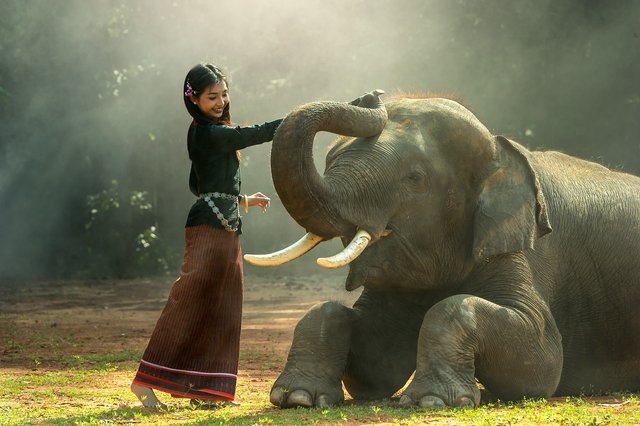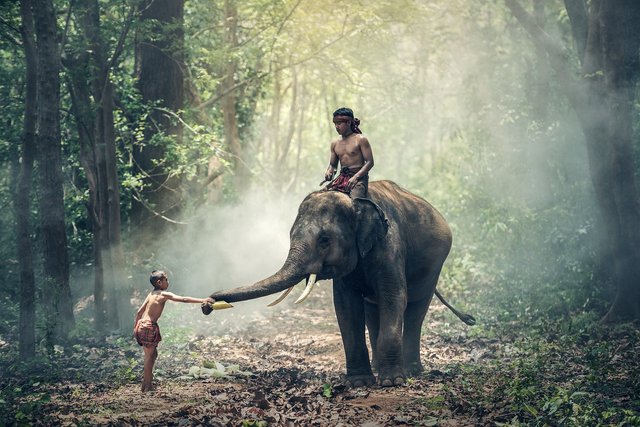Friendly Thai Elephant

The Thai elephant is one of the Asian elephant species that is interesting to study. Scientifically known as Elephas maximus indicus, Thai elephants have distinctive physical characteristics, including large body size, with females usually being smaller than males. They have thick, wrinkled skin, which helps maintain body temperature and protects from the sun. Thai elephant tusks tend to be smaller compared to African elephants, which makes them less attractive to illegal ivory poachers, although they are still a major target in illegal poaching.
Thai elephants are found mainly in tropical forests and wetlands throughout Thailand, but are also distributed in neighboring countries such as Myanmar, Laos, Cambodia and Vietnam. They are herbivores, which makes them very important in maintaining the balance of the ecosystems in which they live. Their diet mainly consists of various types of vegetation such as grass, leaves, fruit, and tree bark.

However, Thai elephants face various serious threats mainly due to the loss of their natural habitat due to deforestation, conflict with humans and illegal hunting. Although protected by law in many countries, the illegal ivory trade remains a serious threat to Thailand's elephant population. Conservation organizations and governments are working hard to protect this species and develop programs to promote awareness of elephant protection.
External challenges aside, Thai elephants also play an important role in Thai culture and history. They are considered a symbol of strength, wisdom and resilience in Thai tradition, often appearing in art, mythology and religious ceremonies. Thai elephants are also used in several official ceremonies, such as royal processions and cultural festivals, reflecting the deep relationship between humans and elephants in Thailand.
Overall, Thai elephants are not only important for preserving the ecosystem, but also play an important role in Thailand's cultural and historical life. Their protection is a priority to ensure that this valuable species can continue to play a role in a healthy and sustainable ecosystem and inherit its rich cultural values from generation to generation.
Upvoted. Thank You for sending some of your rewards to @null. It will make Steem stronger.